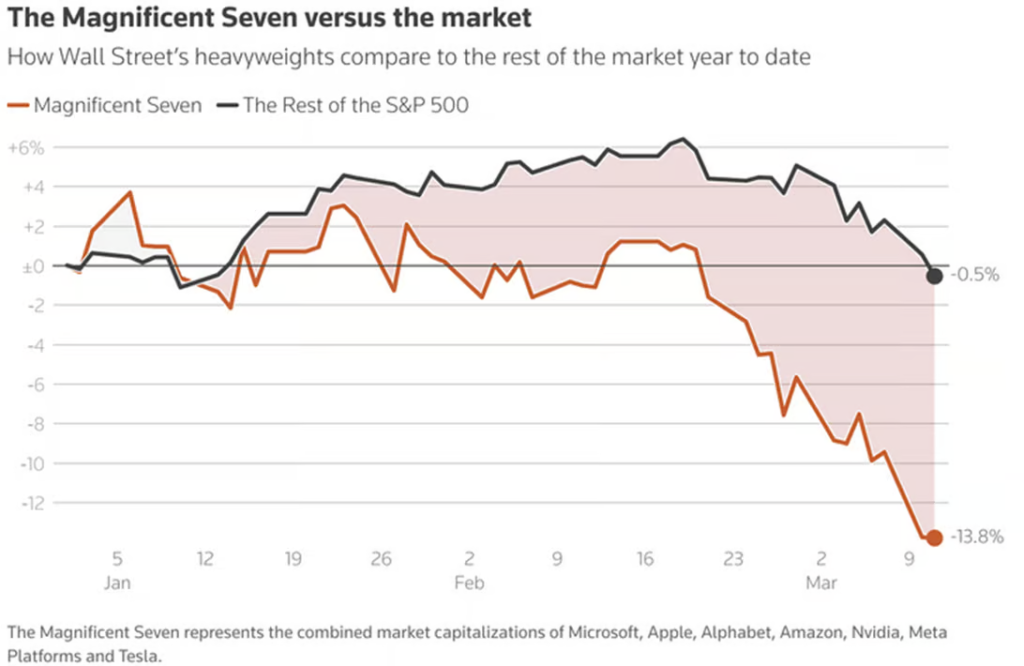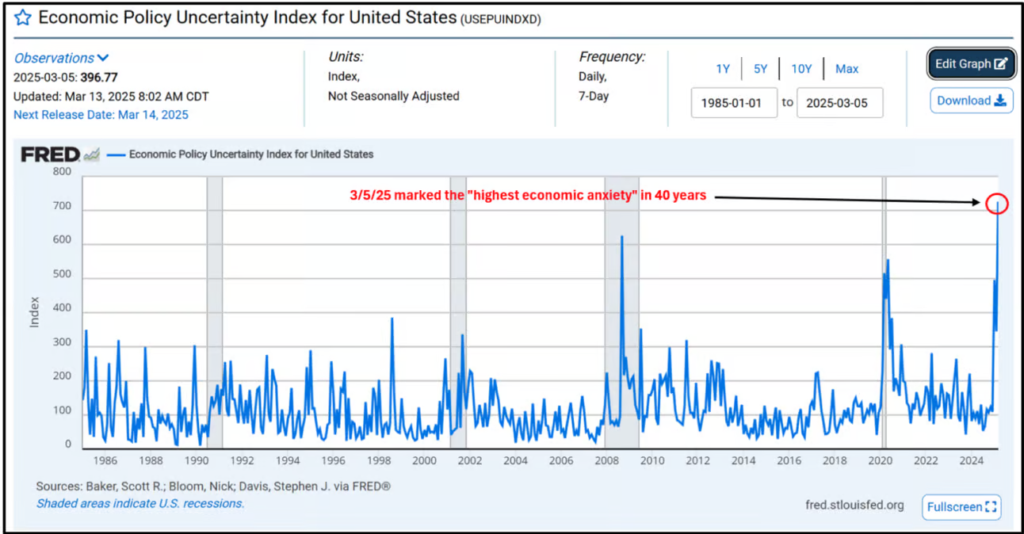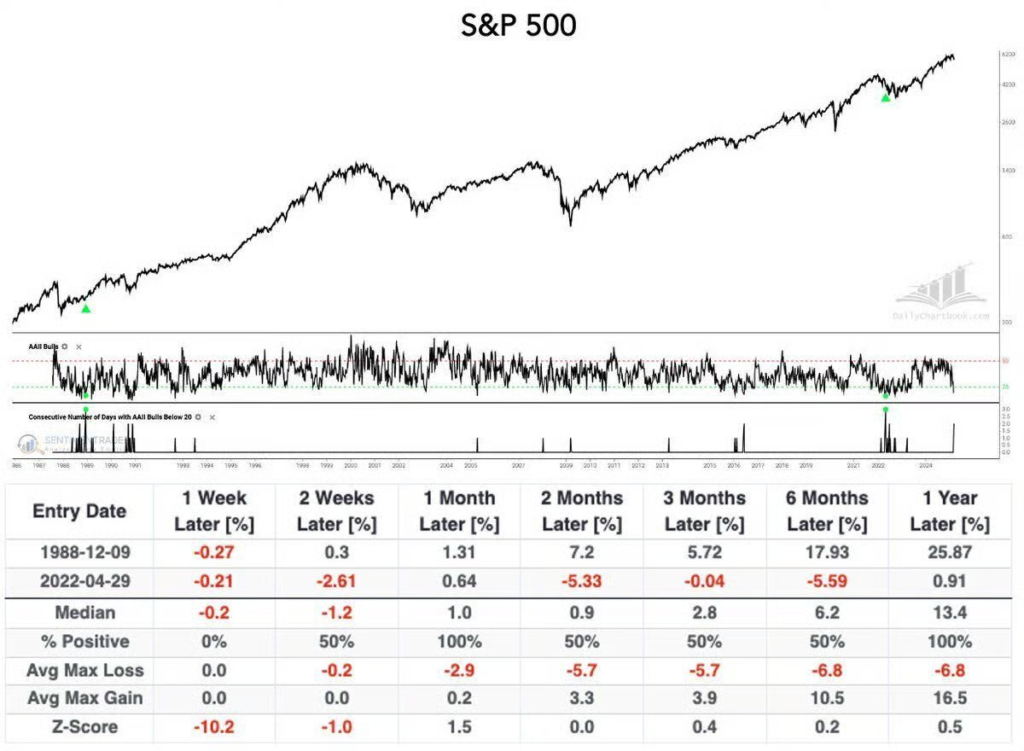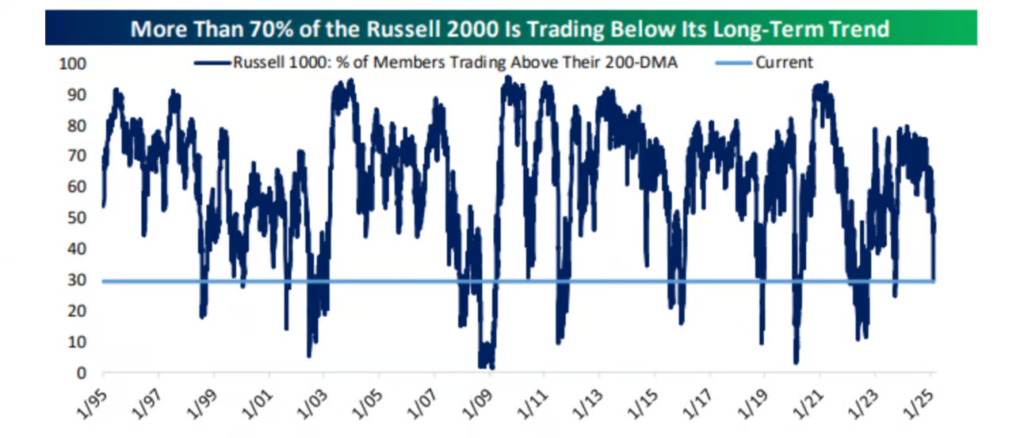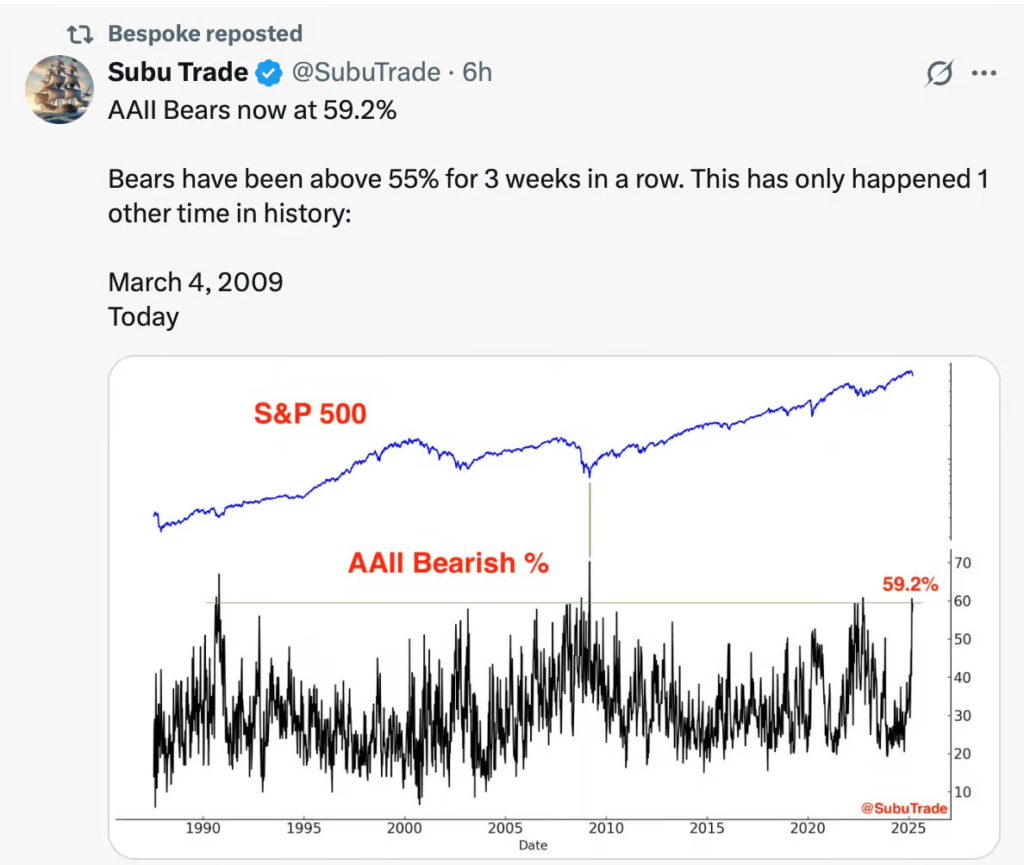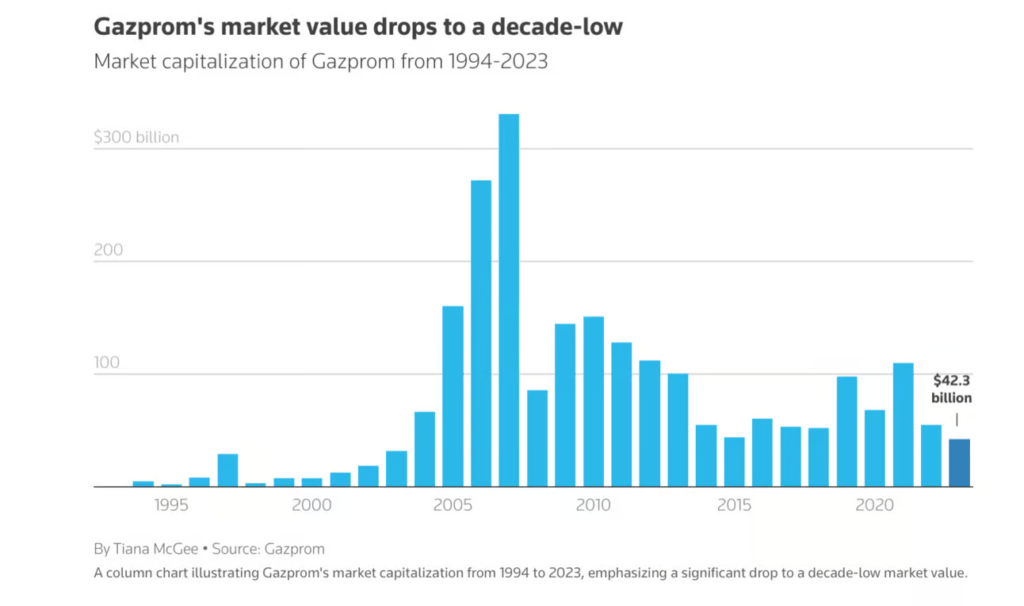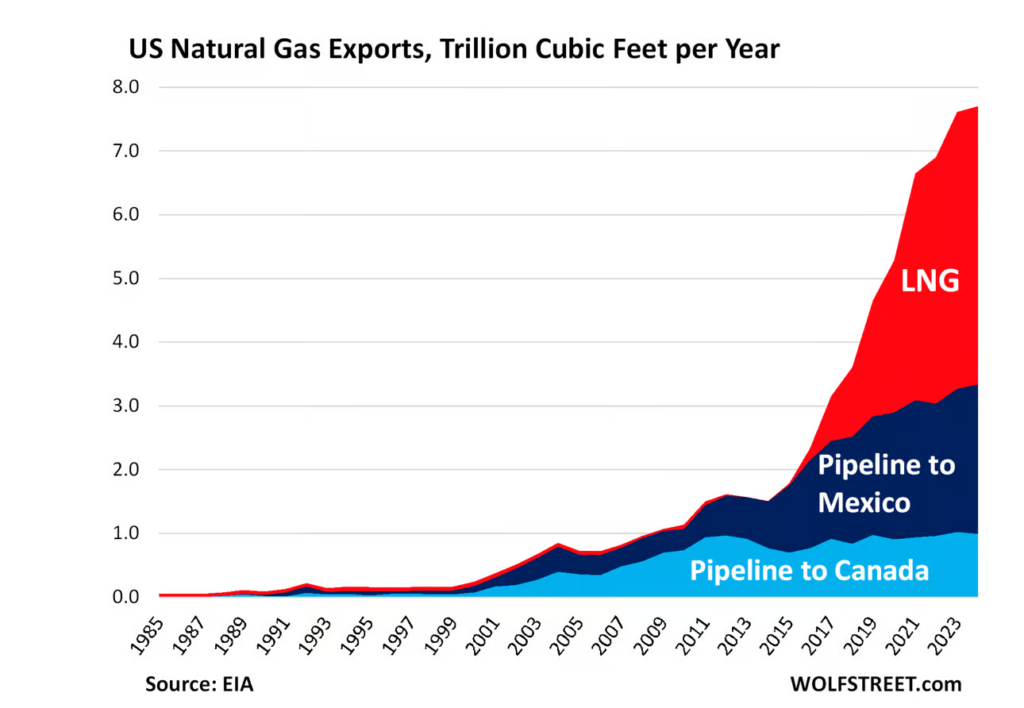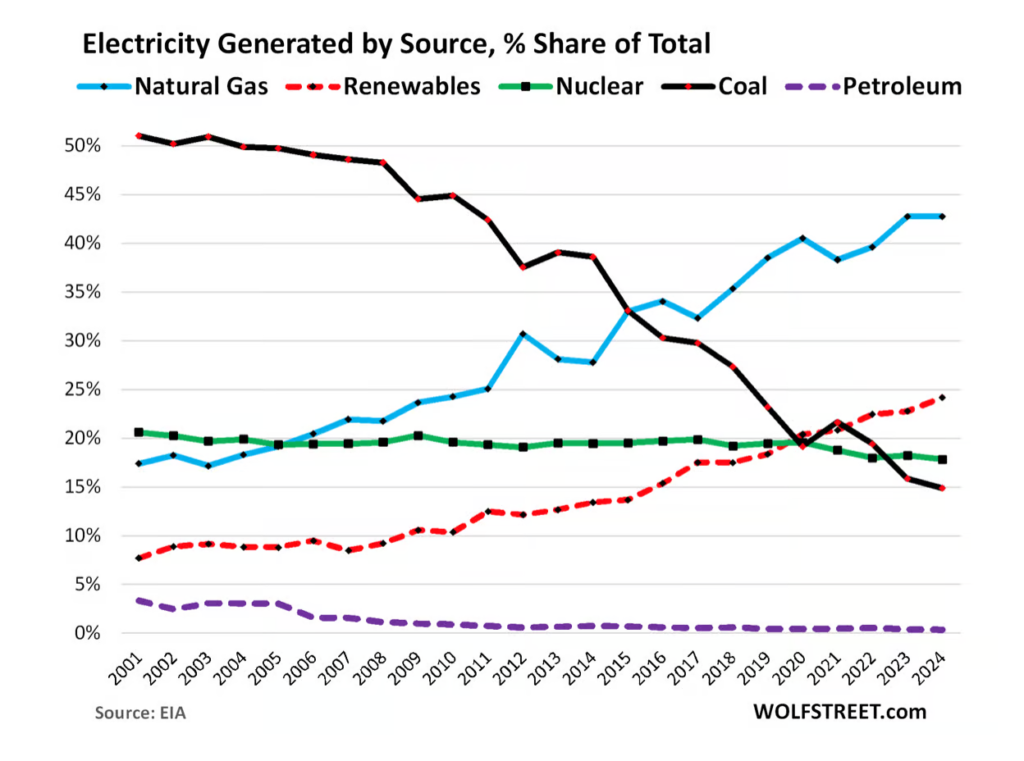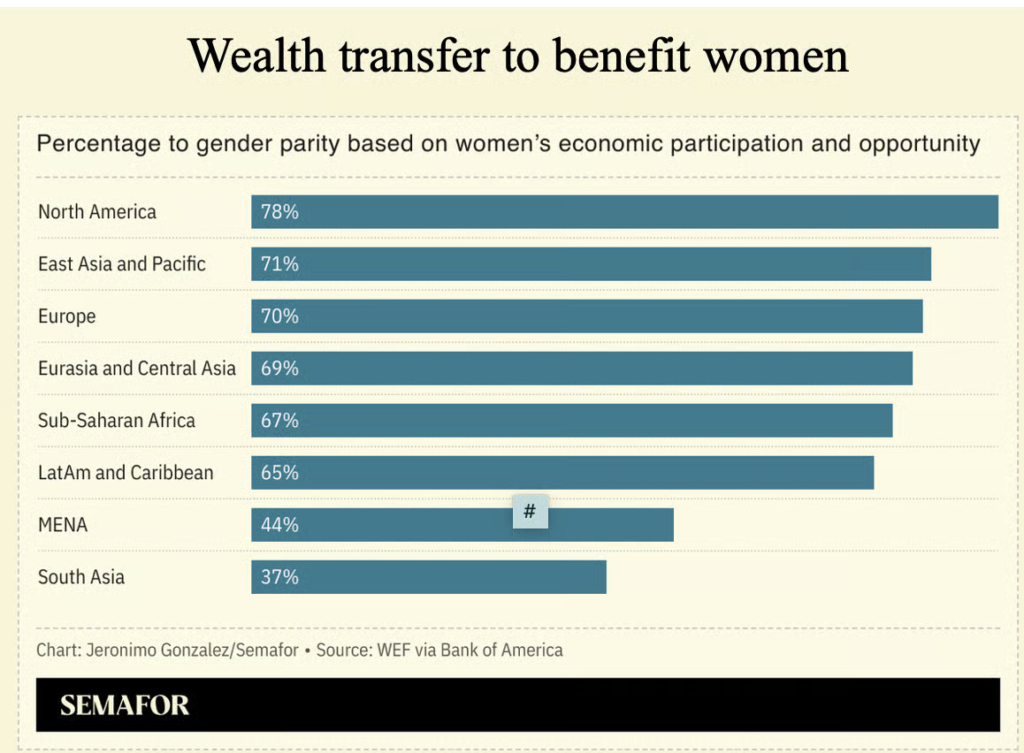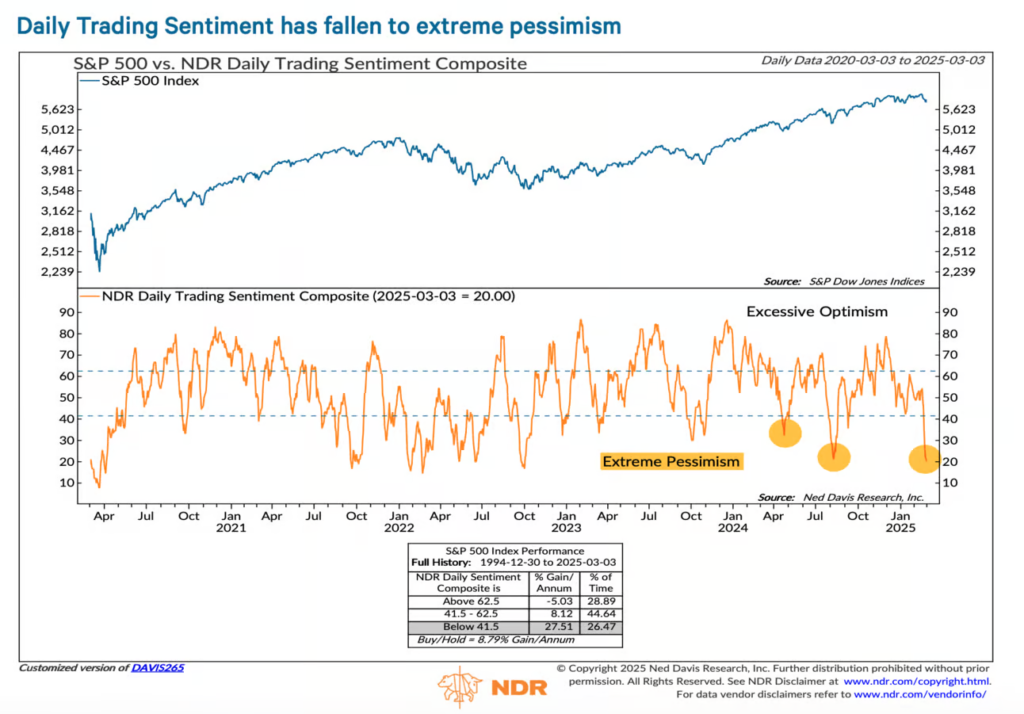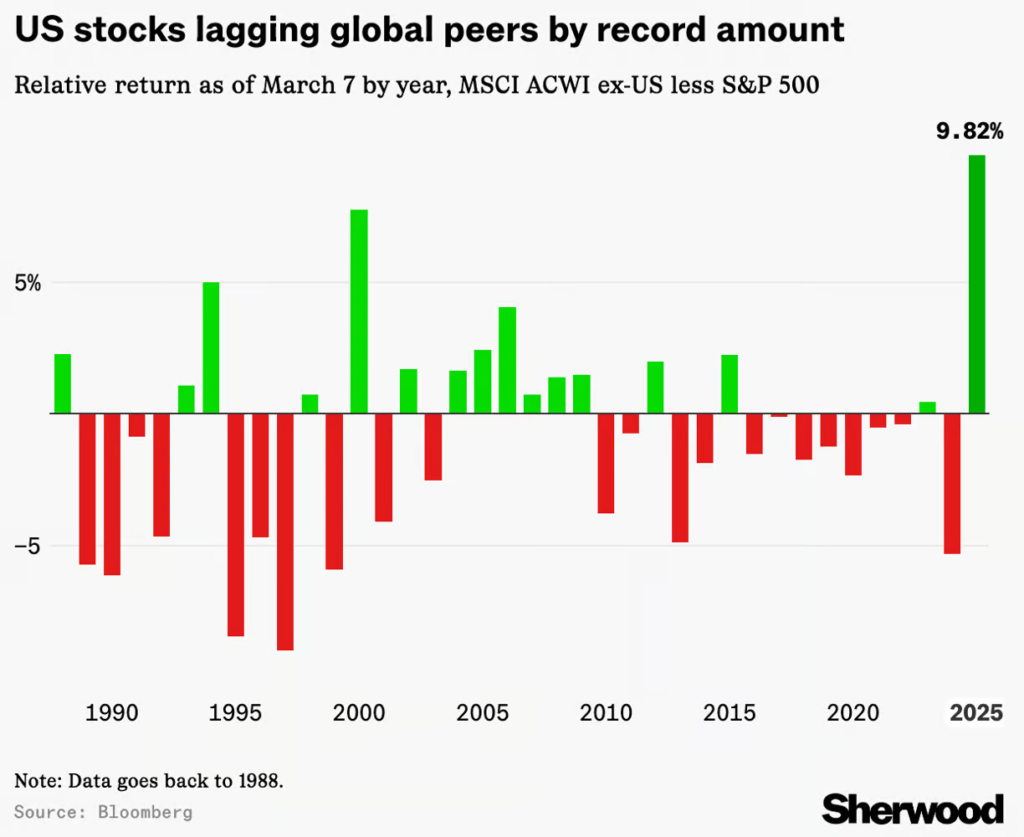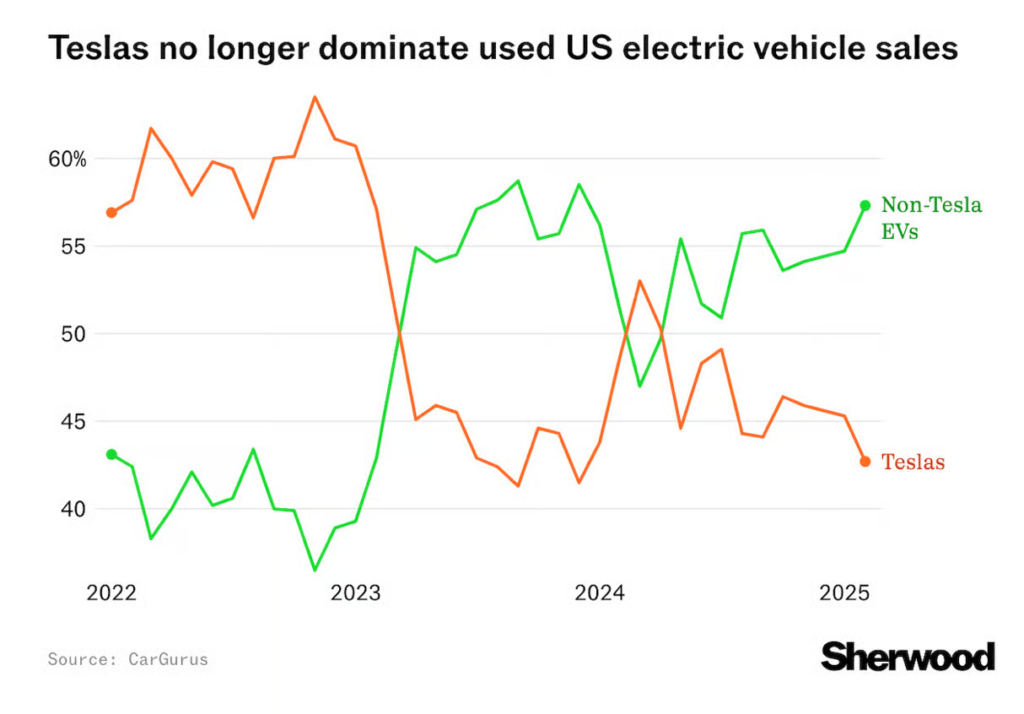1. Huge Drop In U.S. Stock Allocation…Contra Indicator

Macro Charts
2. We are Above Bearish Sentiment Indicators from 2009. Does It Fell Like 2009?

Bespoke Investment Group
3. Past “Policy Uncertainty” Has Been Buy Signal for Stocks

Bull & Baird
4. Gold and Uncertainty

Abnormal Returns
5. Silver +14% Year to Date…$48.70 was 25-Year High 2011

StockCharts
6. Rolling 2- month Performance International vs. U.S. was Biggest Since 2008
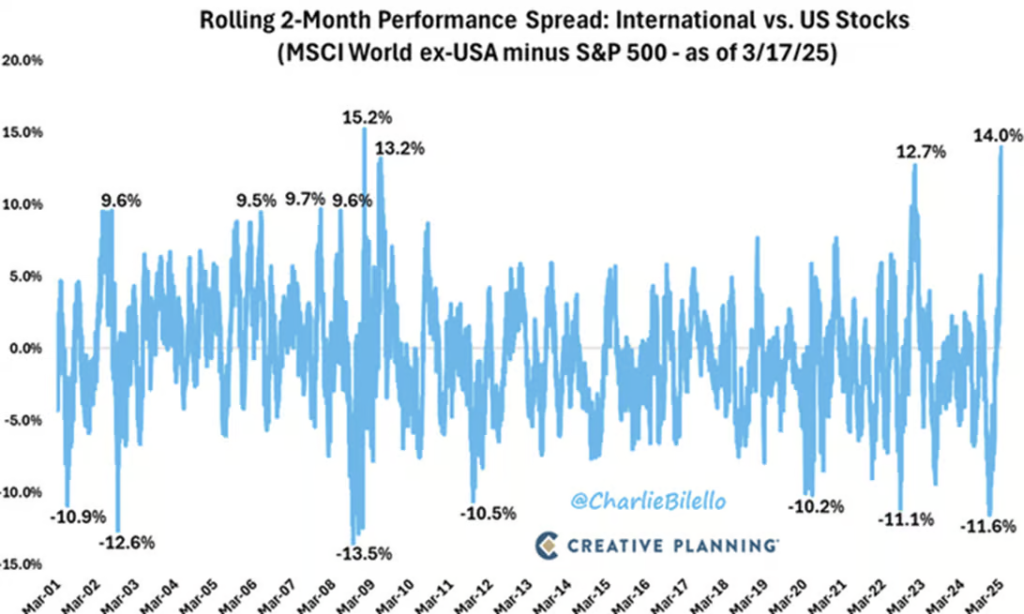
Charlie Bilello
7. Airline Subsector vs. S&P 2025

Cresset Capital
8. Most New APPS Bomb
In the increasingly competitive battle for space on our precious home screens, most apps never even come close to getting enough subscribers to cover their costs.
According to the 2025 State Of Subscription Apps report from RevenueCat, published last week, just a handful of apps now dominate a huge share of users’ screen time. According to the research, the top 5% of newly launched apps make over 400x more in their first two years (~$8,888) than the bottom 25% (~$19).
The report also outlined that only 19% of new apps across all categories generated $1,000 in monthly recurring revenue within two years of launch, implying that 81% failed to hit that threshold. After this, the drop-off is steep, with a large portion of apps failing to meet each consecutive monetary milestone. At the upper end, only 5% of all new apps reached $10,000 in revenue.

Chartr via Sherwood
9. Retirement Fears
Food for Thought: Top retirement fears among US workers:

Daily Shot Brief
10. Improve Your Strategic Thinking
I’ve seen too many leaders get stuck in day-to-day operations and lose sight of the larger picture.
Via Inc: When scaling my company, I learned that strategy wasn’t about having a brilliant idea but about making intelligent, well-informed decisions over time. As an Inc. 500 CEO and now as a strategic coach, I’ve seen too many leaders get stuck in day-to-day operations and lose sight of the larger picture.
The ability to think strategically and make strong decisions separates successful companies from those that stagnate. The good news? Strategic thinking is a skill that can be developed. Here’s how.
1. Zoom out before you zoom in
Many leaders dive into execution without considering the bigger picture. Before making key decisions, assess the industry trends, customer demands, and competitive shifts. A great way to do this is by using frameworks like SWOT analysis (Strengths, Weaknesses, Opportunities, Threats). But don’t stop there—combine multiple frameworks to get a fuller picture.
Consider using Porter’s Five Forces to analyze competitive dynamics or the PESTLE framework to evaluate external factors. I’ve found that leaders who regularly step back to assess the landscape make better choices and avoid costly missteps. One CEO I coached saved millions by spotting an emerging technology trend during a quarterly strategy review that would have made their planned expansion ob
2. Ask better questions
Strong strategic thinking starts with asking the right questions. Instead of rushing to solutions, challenge assumptions. Ask, “What are we assuming?” or “What would have to be true for this to work?” The best leaders encourage debate and seek out different perspectives. Create a culture where team members feel safe challenging ideas, regardless of hierarchy.
The most valuable insights often come from front-line employees who interact with customers daily. Consider implementing regular strategy meetings where team members from different departments share perspectives and challenge conventional wisdom. Questioning the status quo opens the door to new opportunities and avoids blind spots.
3. Embrace second-order thinking
Short-term wins can create long-term setbacks. Second-order thinking—asking, “And then what?”—helps leaders anticipate future consequences. Cutting costs by reducing staff might improve short-term margins but could lower team morale and productivity later. I’ve seen companies lose key talent and market share because they failed to consider the ripple effects of their decisions.
Create decision trees to map out potential consequences and scenarios. Consider the immediate impact and how competitors, customers, and employees might react. Before making decisions, think through their long-term implications and whether they align with your bigger goals.
4. Make time for deep work
Strategic thinking requires focus, but most leaders’ calendars are packed with meetings and urgent tasks. If you don’t carve out time for deep thinking, you’ll always be reacting instead of planning. Block out a few hours each week for strategic reflection.
The best CEOs I work with treat this time as non-negotiable. They create “think weeks” like Bill Gates or monthly strategy days to disconnect from daily operations. Use this time to read industry reports, analyze competitive moves, and envision different futures for your business. Consider keeping a strategic journal to track your thoughts and patterns over time. Unplug, analyze trends, and think long-term.
5. Test, learn, and adapt
No strategy is perfect from the start. The best leaders continuously test their ideas, gather feedback, and adjust. Instead of committing all your resources upfront, run small experiments. Try a limited product launch, test a new sales approach, or pilot a new process. Set clear success metrics and timelines for these experiments.
One technology company I advised saved substantial resources by testing their new feature with a small user group first, allowing them to identify and fix critical issues before a full launch. Create feedback loops that bring in customer insights, market data, and team input. Learning from real-world data allows you to refine your strategy and stay adaptable.
The best leaders aren’t just problem-solvers; they’re opportunity-finders. They understand that strategic thinking is a muscle that needs regular exercise. Adopting these habits and creating structures supporting strategic reflection will strengthen your decision-making capabilities and build a more resilient organization.
Remember, strategy isn’t a one-time exercise—it’s an ongoing process of observation, analysis, and adaptation.












